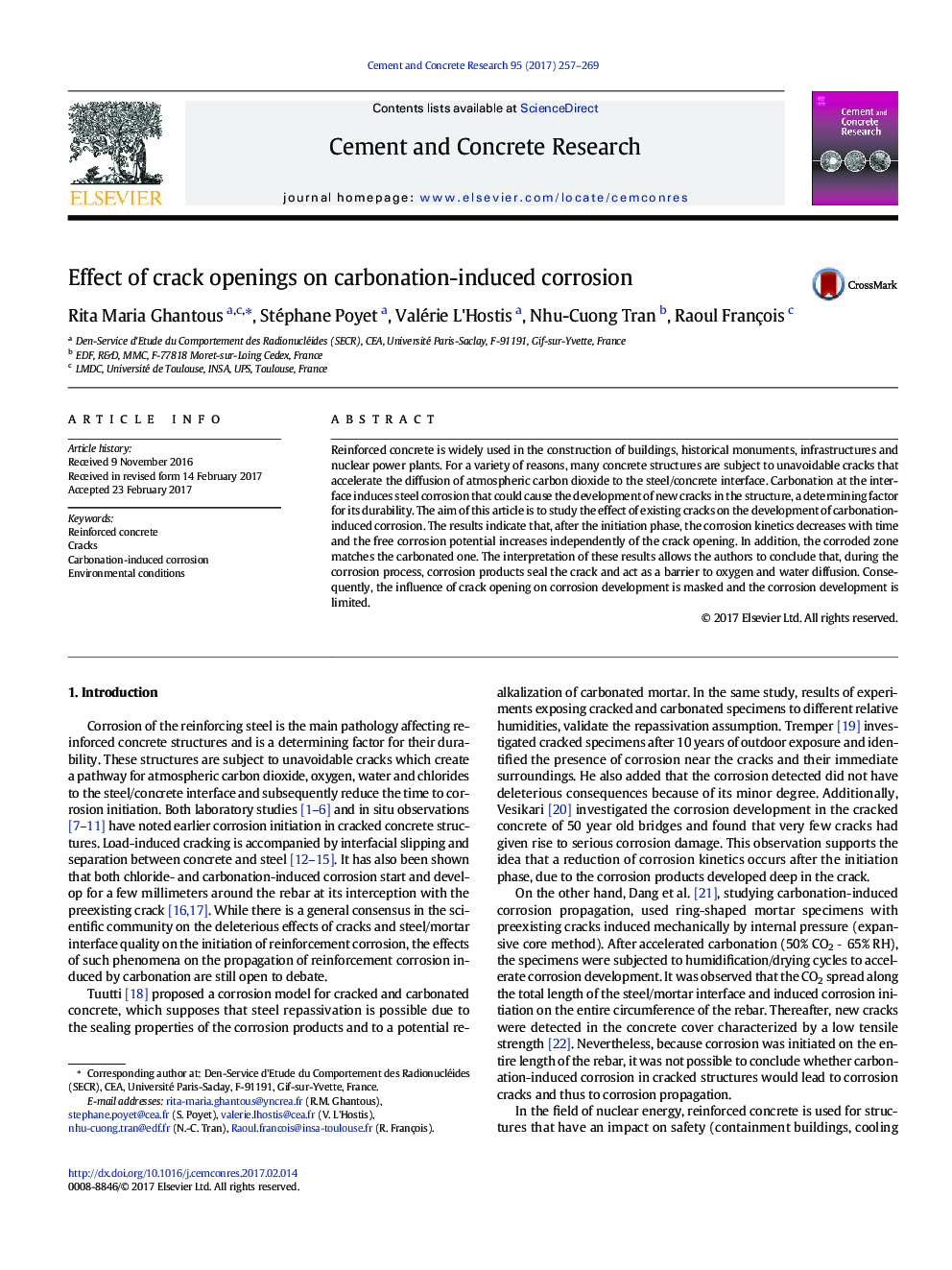| کد مقاله | کد نشریه | سال انتشار | مقاله انگلیسی | نسخه تمام متن |
|---|---|---|---|---|
| 5437074 | 1509728 | 2017 | 13 صفحه PDF | دانلود رایگان |
عنوان انگلیسی مقاله ISI
Effect of crack openings on carbonation-induced corrosion
ترجمه فارسی عنوان
اثر حفره های کرکی بر خوردگی ناشی از کربناته
دانلود مقاله + سفارش ترجمه
دانلود مقاله ISI انگلیسی
رایگان برای ایرانیان
کلمات کلیدی
بتن آرمه، ترک ها، خوردگی ناشی از کربن، شرایط محیطی،
ترجمه چکیده
بتن مسلح به طور گسترده ای در ساخت ساختمان ها، آثار تاریخی، زیرساخت ها و نیروگاه های هسته ای استفاده می شود. به دلایل مختلف، بسیاری از سازه های بتنی با ترک های اجتناب ناپذیری مواجه هستند که سرعت انتشار دی اکسید کربن جو را به سطح فولاد / بتن افزایش می دهد. کربن در رابط باعث ایجاد خوردگی فولاد می شود که می تواند باعث ایجاد ترک های جدید در ساختار شود، عامل تعیین کننده برای دوام آن. هدف از این مقاله بررسی اثر ترک های موجود در توسعه خوردگی ناشی از کربناته است. نتایج نشان می دهد که پس از مرحله آغازین، سینتیک خوردگی با زمان کاهش می یابد و پتانسیل خوردگی آزاد به طور مستقل از باز شدن کرک افزایش می یابد. علاوه بر این، منطقه خورنده هم مطابق با گاز کربن است. تفسیر این نتایج اجازه می دهد که نویسندگان نتیجه گیری کنند که در طی فرآیند خوردگی محصولات خوردگی، ترک را درهم می شکند و به عنوان یک مانع برای انتشار اکسیژن و آب عمل می کنند. در نتیجه، تاثیر باز شدن کرک در توسعه خوردگی پنهان شده و توسعه خوردگی محدود شده است.
موضوعات مرتبط
مهندسی و علوم پایه
سایر رشته های مهندسی
مهندسی صنعتی و تولید
چکیده انگلیسی
Reinforced concrete is widely used in the construction of buildings, historical monuments, infrastructures and nuclear power plants. For a variety of reasons, many concrete structures are subject to unavoidable cracks that accelerate the diffusion of atmospheric carbon dioxide to the steel/concrete interface. Carbonation at the interface induces steel corrosion that could cause the development of new cracks in the structure, a determining factor for its durability. The aim of this article is to study the effect of existing cracks on the development of carbonation-induced corrosion. The results indicate that, after the initiation phase, the corrosion kinetics decreases with time and the free corrosion potential increases independently of the crack opening. In addition, the corroded zone matches the carbonated one. The interpretation of these results allows the authors to conclude that, during the corrosion process, corrosion products seal the crack and act as a barrier to oxygen and water diffusion. Consequently, the influence of crack opening on corrosion development is masked and the corrosion development is limited.
ناشر
Database: Elsevier - ScienceDirect (ساینس دایرکت)
Journal: Cement and Concrete Research - Volume 95, May 2017, Pages 257-269
Journal: Cement and Concrete Research - Volume 95, May 2017, Pages 257-269
نویسندگان
Rita Maria Ghantous, Stéphane Poyet, Valérie L'Hostis, Nhu-Cuong Tran, Raoul François,
